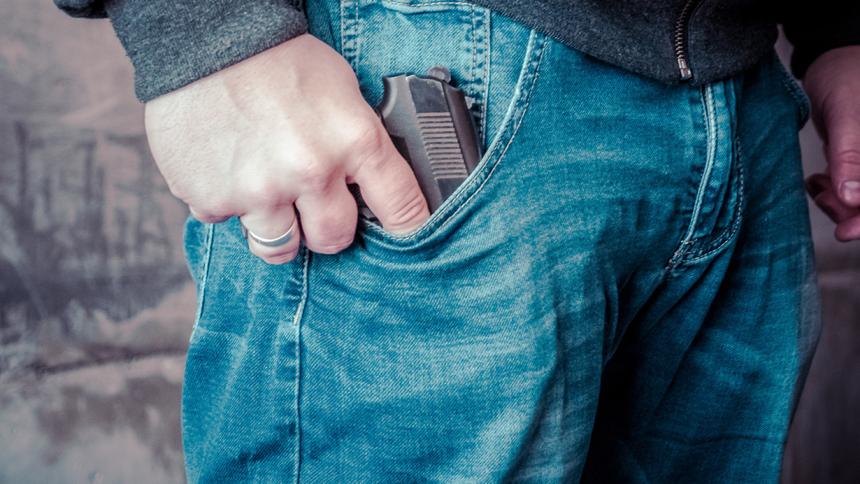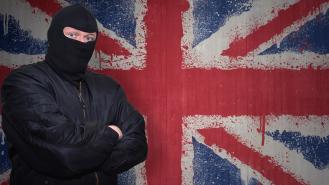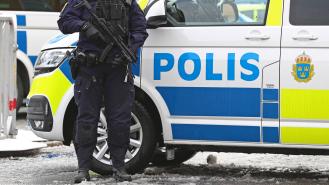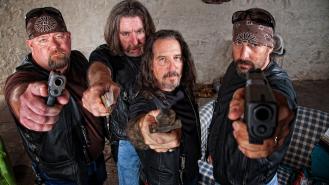
When British crime gangs go to war
To some outsiders, Britain is seen as a quaint little nation of archaic monarchy, etiquette, bowler hats and tea ‘n’ crumpets on the lawn. Of course, spend any time whatsoever over here and those notions are quickly dashed. The UK isn’t exactly a crime-addled Hellhole or a failing state, but nor is it all rolling hills, green pastures and unlocked back doors. Crime, especially organised crime, thrives here. Just as it does everywhere else in the world.
There are some serious criminal enterprises in this country. We’ve explored some of the biggest crime gangs in Britain before, in fact. Most quietly go about their illicit business, making money and keeping their heads down. Occasionally though, they make noise.
Crime can be a messy business. Toes get stepped on and fingers get broken. Inter-gang feuds can happen. And mediation isn’t the first port of call.
Here are some of the most memorable and noteworthy examples of when British gangs declared war on each other…
The Krays vs. The Richardsons
It makes sense to kick things off with British criminal history’s most notorious feud, the East London vs. South London turf war of the 1960s between two sets of infamous brothers.
Ask someone to conjure up an image of old school British ‘firms’ and they’ll no doubt picture The Kray Twins. Infinitely higher profile than their peers south of the river, Ronnie and Reggie have legendary status in British lore. The reality was, however, Eddie and Charlie Richardson of The Richardson Gang were much more violent, more feared, bigger earners and more impressive criminals.
Charlie Richardson and his ‘Torture Gang’ resented the way The Krays swanned about London like film stars while him and his crew were seen as thugs. The animosity was reciprocated and tit-for-tat violence between the two outfits permeated London in the early and mid-sixties.
Things came to a head when Ronnie shot and killed the Richardson-affiliated hood George Cornell in 1966, but before the war could fully erupt, the Met Police temporarily shut down the Richardsons with a spate of arrests that cooled the beef between the two families.
The Johnson Crew vs. The Burger Bar Crew
In the 1990s and early 2000s, two street gangs ruled Birmingham. They ran drugs and guns, committed robberies and kidnappings and even carried out murders. The Johnson Crew, or ‘Johnnies’, and The Burger Bar Crew, or ‘Burgers’ poisoned The Second City with a blatant and terrifying disregard for life. Many of the killings stemmed from their intense rivalry.
Both gangs started, rather oddly, innocently enough. In fact, you could argue that their formations were positive. Both factions grew as support networks, ways for young black and Asian teenagers in Brum to be able to move freely without fear of attacks from far-right groups which were a big problem in the city at the time. Soon though, criminality and violence crept in.
Both gangs began selling drugs in Birmingham and quickly encroached on one another’s turf. Beatings were exchanged, kidnappings and stabbings followed. Then shootings. Things escalated as more and more extreme tactics were employed. Soon the war would become national news.
The postcode rivalry came to a head in 2003 when two teenage girls, Letitia Shakespeare and Charlene Ellis were shot dead in the crossfire between the two gangs at a New Year’s Eve party.
The Tottenham Boys vs. The Hackney Bombers
Some of the fiercest gang warfare on the streets of Britain comes from organised crime groups with foreign ties. For some years now, Turkish gangs have controlled vast swathes of the drugs that move around London.
There’s no national allegiance, however. It’s every group for themselves. Not only do Turkish OCGs have to evade the police and compete with local and other foreign gangs for control over the capital’s heroin trade, they often fight each other.
It’s fairly safe to say that North London’s Tottenham Boys, or ‘Tottenham Turks’, and East London’s Hackney bombers, or ‘Hackney Bombicilar’, don’t get on. Over the last 12 years, dozens of serious assaults and up to ten murders have been attributed to the feud. So you’d imagine the initial cause was something quite shocking, right? Wrong. It started when a senior member of the Bombers was slapped across the face in a snooker club controlled by the Tottenham mob.
The Mooney Gang vs. The Park Brigade
Between the wars, Sheffield was a tough place to live. A dark and thick black soot-stained the city, one George Orwell called ‘the ugliest in the world’. Poverty was rife, unemployment was the norm. Overcrowding and rife alcoholism and gambling didn’t help. From such environments, crime usually sprouts.
We’re not talking the odd sixpence on a horse here. We’re talking about illegal gang-run set-ups. In 1920s Sheffield, the game was ‘ring toss’, effectively heads or tails. Miners would often spend their wages betting on the game in the city centre which was controlled by George Mooney’s Mooney Gang.
Worsening unemployment saw takings down and Mooney’s bottom line hit. So he let go of most of his ‘workforce’. Those hoods soon started up their own gang, The Park Brigade, and started trying to muscle in on what was left of Mooney’s business. It turned ugly. Very ugly.
Soon, the violence consumed both gangs and neither were making much money. It all became about vengeance and reciprocal attacks. Things came to a head when a man unaffiliated to either gang got caught up. When William Plommer was beaten to death on the street where he lived, the community and police took a stand and soon both gangs were driven out and taken down.
‘The Ice Cream Wars’
It might sound as if we’re ending this article on something of a funny note. Yet while the idea of violent gang warfare and lollies being related might sound daft, ‘The Glasgow Ice Cream Wars’ were anything but.
The idea of serious criminals selling drugs and stolen goods from a rainbow-coloured Transit van that plays tinny versions of Greensleeves and the Z Cars theme tune out of a roof-mounted speaker is pretty strange. The idea that lots of them would is downright bizarre. Welcome to Glasgow in the 1980s.
The sales of 99s, Fabs and Zooms were, of course, a front. What started as an illicit and frankly ingenious way to hawk narcotics in broad daylight soon became something of a shame to the city. Soon, everyone knew about the ruse and pressure grew on the police to act. They were slow to do so and were often referred to as ‘The Serious Chimes Squad’ by Glaswegians at the time.
Turf soon became an issue amongst the gangs running vans. Soon, the main gang-involved - the Marchettis - felt their patches were being encroached on. Violence ensued, culminating in a ‘frightener’ being ordered. But instead of one young lad’s house being attacked with fire as a warning, a full-scale blaze erupted and Andrew Doyle and his entire family (including an 18 month-old child) died.
War. What is it good for? Absolutely nothin’.










